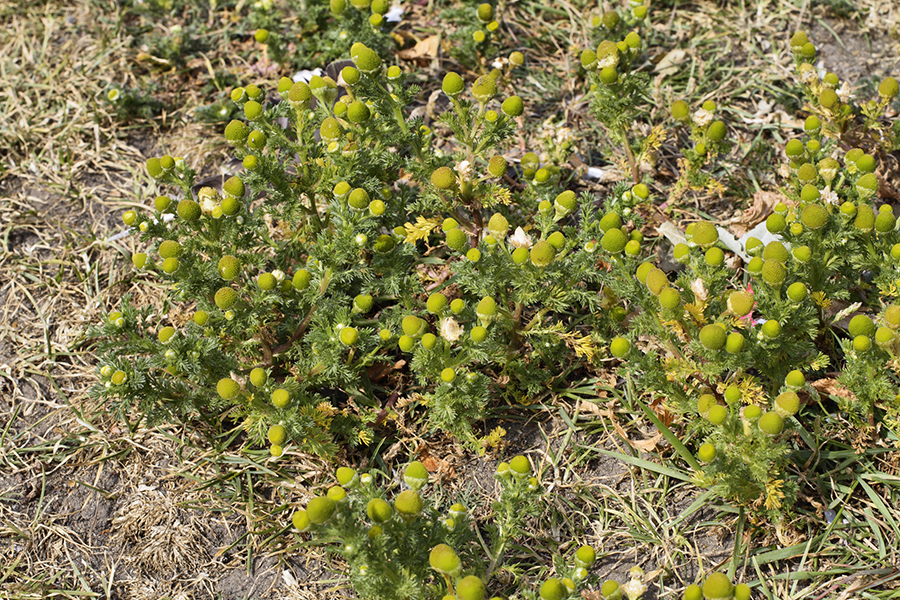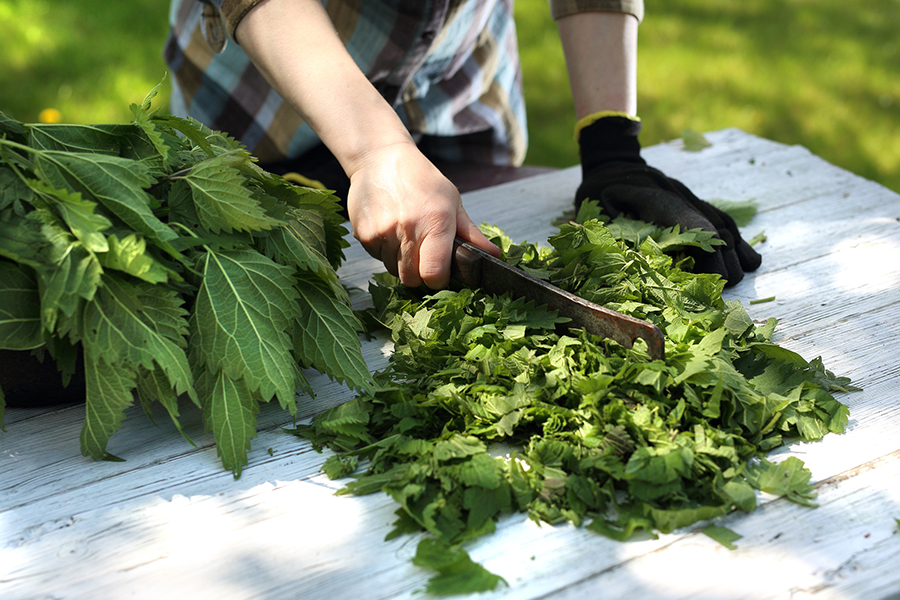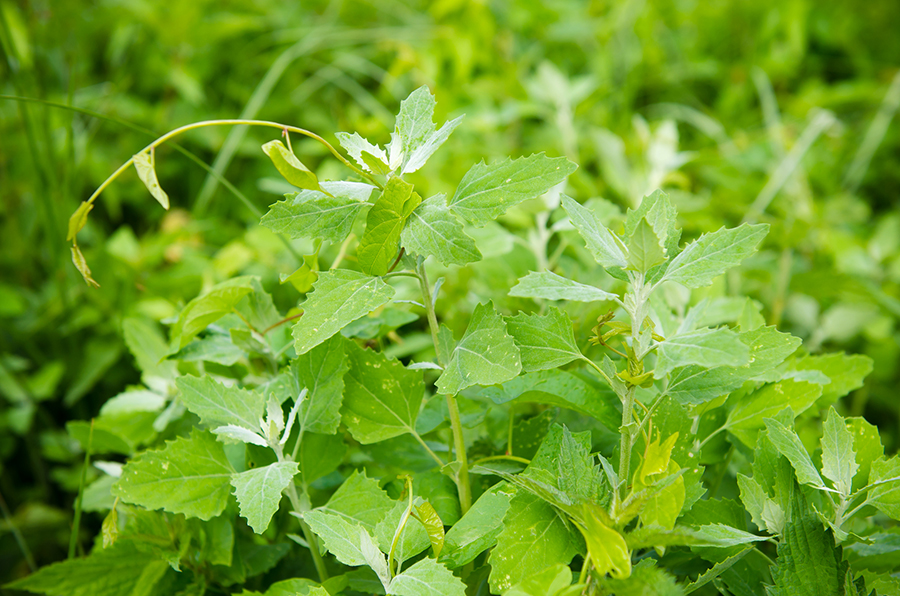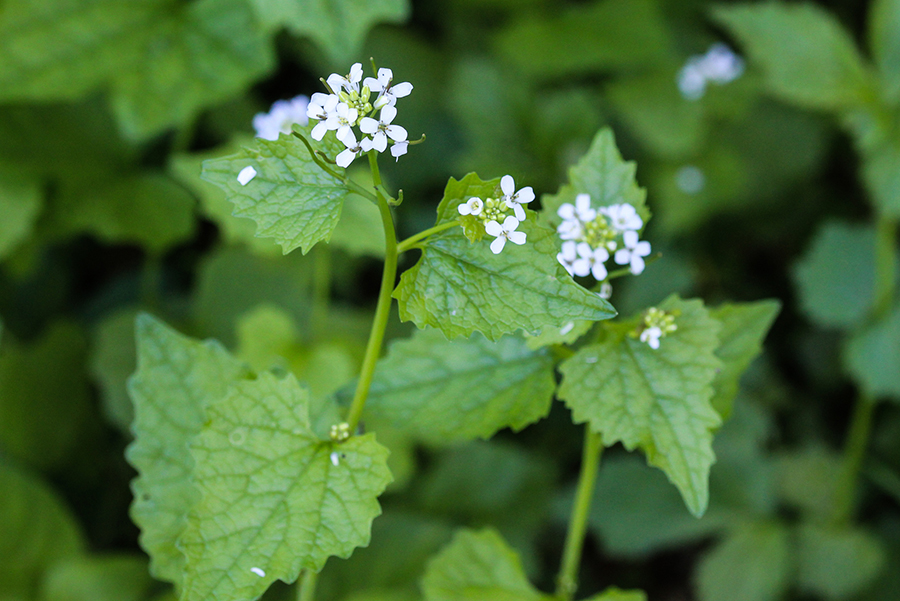Eating wild plants part of growing food foraging trend
You’ve spent countless hours pulling and tossing weeds into your compost bin, even cursed their existence. And you’ve racked your brain thinking of ways to keep your yard and garden weed-free.
But have you tried eating them?
Blair Lebsack (Cook ’98) has. As the owner and chef at RGE RD, an Edmonton with a strong focus on locally sourced ingredients, he encourages others to tap into what he sees as a growing trend. “We’re at the start of some serious and focused organizing around foraging in Alberta,” says Lebsack.
Many plants considered to be weeds are actually herbs – rich in proteins, minerals and other nutrients. They're also free and, most importantly, tasty. Here's his guide to harvesting an overlooked bounty of easy-to-spot and all-too-common specimens, beyond dandelions and onion grass. So put away the herbicide and get picking.
Pineapple weed
 Often mistaken for chamomile, pineapple weed grows along roadsides or driveways. Lebsack says it's tastiest in spring but good in summer, too.
Often mistaken for chamomile, pineapple weed grows along roadsides or driveways. Lebsack says it's tastiest in spring but good in summer, too.
“Sautéed or pickled are best, or in salads,” he says. “Picking takes little effort – pull them out with your hands.”
Lebsack adds that the flowers, dried or fresh, make a delightful tea.
Stinging nettle

Nettle leaves are delicious, whether steamed, boiled or sautéed, Lebsack says, and they are excellent in soups, stir-fries and smoothies. He'll also purée them to flavour gnocchi, pasta, beurre blanc and even ice-cream. Nettles are packed with vitamins.
The best time to harvest them is in early spring, when the leaves are most tender (older growth tends to be bitter).
Before you tuck in, you’ll have to overcome one barrier: the nettle’s ferocious stings. Lebsack reccomends thick gloves when harvesting; keep them on when collecting nettles and during blanching. Boiling the plant for two minutes will remove the stings.
Lamb’s quarters

A close relative of spinach, this weed grows in most gardens.
“It’s scrumptious steamed, sautéed or as a salad green,” Lebsack says, adding that its leaves, shoots, seeds and flowers are edible.
Harvest this weed early, Lebsack advises, so its roots don’t consume other plants. “Lamb’s quarters can quickly take over your garden.” It's also tastier when young. Snip the top six- to eight-inches of the plant. If the stem doesn’t break easily, you’ve waited too long and it will be tough to eat.
Lamb's quarters can contain a lot of oxalic acid, which can cause kidney stones or digestive issues. Cooking will destroy much of the acid. Use lemon juice as a neutralizer if using the plant raw in smoothies or juices.
Garlic mustard

This invasive species grows almost anywhere, and is particularly common in Edmonton and St. Albert. According to the Alberta Invasive Species Council, Garlic mustard releases chemicals into the soil that inhibit the growth of native species. The Government of Alberta has designated it as noxious, meaning all parts of the plant need to be killed. So let's eat!
For people, Lebsack says, garlic mustard is very healthy. “It’s a leafy green, similar to spinach.” Every part of it, from roots to seeds, are edible.
The tastiest part is the stem, especially steamed or sautéed and drizzled with olive oil or butter or chopped up raw and added to soups, salads and other dishes. The leaves and flower buds can be used for pesto or hummus. Harvest the top foot of the stem, preferably once flower buds are visible.
Tips for the first-time forager
Before heading into nature to collect wild groceries, Lebsack says there are a few factors to keep in mind.
- Do your homework. Never pick or eat a plant you can’t identify, he says. Several edible weeds have ‘toxic look-alikes.’ Use a reputable foraging guidebook or plant identification app, and take classes or hire a professional guide to teach you.
- Go organic. Be sure the plants have not been sprayed with pesticides or herbicides and are free of livestock waste or agricultural run-off. Remember, collecting plants from protected areas, public parks or conservation zones is often prohibited.
- Pick them young. Younger plants generally taste better. Avoid thick stems, most of which are too tough to digest.
- Cut carefully. Weeds have natural defences to ward off insects and predators. “Some of these can make the plant not taste that great,” Lebsack says. “So, when cutting the leaves, make sure to slice carefully, so you do not trigger these defence mechanisms.” Use a sharp utensil so you don’t bruise the plant.
- Do a taste-test. “Once you source an edible weed, sample a small amount to make sure you like it before you spend a lot of time harvesting,” Lebsack says. Eat small quantities when introducing wild plants into your diet to ensure they agree with your system.